Joe Canning - Modern Gladiators: A History of Kickboxing
From the Archives
By Paul 'Batman' O'Brien
B.A., N.C.E.H.S., Dip. Acu., Adv. Dip. OBB, Cert Clin. Med. Pn1, PN-SSR, PN-NCA, M.AFPA, M.ETCMA, M.C.Th.A.
Joe Canning, a man famous in Ireland for the development of kickboxing throughout the country, recently passed away. Irish Kickboxing owes a national debt to Joe, and his brother George for their dedication to the sport of kickboxing.
I thought, given his passing I would share with you an article I wrote, published in Irish Fighter Magazine in 2008, based on extensive interviews with Joe and George.
A Short History of Irish Kickboxing
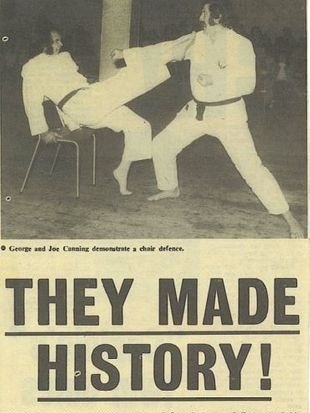 George and Joe Canning
George and Joe CanningBorn of a desire to truly test oneself in honest combat, Kickboxing is a relatively new sport both worldwide and here in Ireland. It has seen political problems in its infancy, troubles over rules and regulation but inevitable it is on the rise in terms of its popularity and in the quality of its competitors and athletes. Many of my friends and colleagues compete in Kickboxing tournaments here in Ireland. My good friend Barry Maguire recently beat a 2 time world champion and the exhilaration and spirit he shows towards his training and the competition he finds in kickboxing is humbling to even the most dedicated of martial artists.
I very much wanted to understand this passion, this desire to compete and test oneself in this arena over the point based system I grew up with in Shotokan Karate. So I went straight to the source, one of the men who introduced Kickboxing to Ireland, Mr. Joe Canning, and over a traditional Irish Breakfast we discussed the finer points of the history of kickboxing and what it means to be a Modern Gladiator.
Kickboxing is quite simply a stand up form of full contact competitive fighting that involves the use of martial-arts-style kicks and boxing-style punches to defeat an opponent in a similar way to that of standard boxing. The key difference is of course the kicking, yet as I would later learn, this was limited in early competition. In contrast to the growing popularity of UFC/ Pride and MMA style fighting Kickboxing is a standing sport with no continuation of the fight once a combatant has been taken to the ground.
While very much associated with America, thanks to kickboxing talents such as Bill “Superfoot” Wallace, Joe Lewis, and more, Kickboxing, began in a small town hall in Japan, back in 1959. A Kenpo instructor called Tatsuo Yamada, who established "Nihon Kempo Karate-do", had become frustrated with the sparring of his traditional based system. Much like many current karate and kenpo schools, sparring was limited in contact and based on a points system. Yamada Sensei, felt that the point system was not a fair test of a fighter, as one could win on points yet, not have defeated a superior opponent in combat, the rules repressing genuine physical conflict.
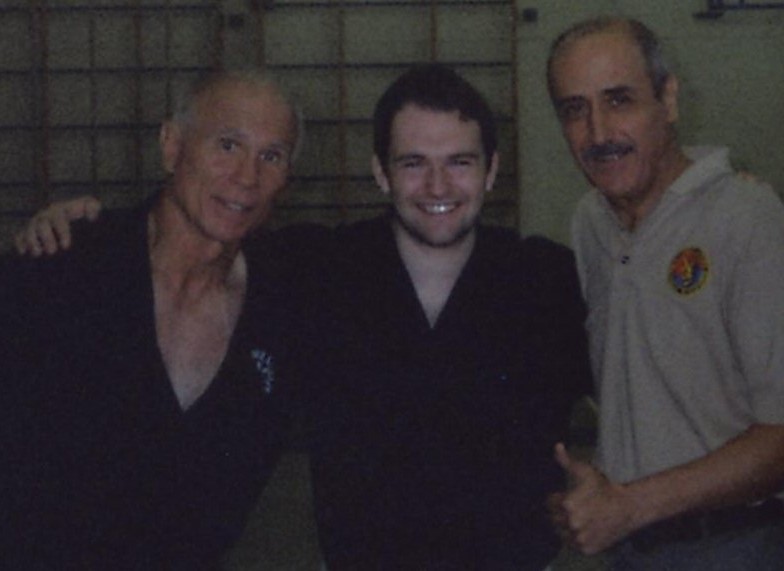 Bill "Superfoot" Wallace, Paul 'Batman' O'Brien and Grandmaster John Pellegrini
Bill "Superfoot" Wallace, Paul 'Batman' O'Brien and Grandmaster John PellegriniYamada and the Muay Thai Connection
Having seen the full contact combat of Thailand in Muay Thai bouts and witnessed the definitive fighting till knock-out, he decided that this was a true test of a fighter and thus he wanted to perform Karate matches with full-contact rules. Up until that point practitioners were not allowed to hit each other directly in karate matches and to do so was unthinkable. It was an ambitious project meeting with great scepticism and objection when he announced the concept publicly as, "The draft principles of project of establishment of a new sport and its industrialisation" in November, 1959, and he tentative proposed the name of "Karate-boxing" for this new sport.
Yamada, who was one of the few karateka’s at the time interested in developing a study of Muay Thai as an adjunct to Karate, teamed up with a Osamu Noguchi Sensei, an instructor of the harder Karate style of Kyokushin and introduced the first Karate vs. Muay Thai fight on February 12th 1963 – the very first kickboxing bout. Three karate fighters, Tadashi Nakamura, Kenji Kurosaki and Akio Fujihira (also known as Noboru Osawa) travelled to the Lumpinee Boxing Stadium in Thailand, and fought against 3 Muay Thai fighters. Japan won by 2-1.
However, Noguchi and Kenji Kurosaki (a Kyokushin karate instructor), weren’t happy with their performance despite victory and studied Muay Thai, probing for advantages and disadvantages in comparison to their own karate and with careful study developed a combined martial art which Noguchi named Kickboxing.
In deference to their original karate training and to distinguish it from Muay Thai fighting they allowed throwing, and head butting initially, although after some serious health concerns both of these were later barred from competition. Soon after this, Noguchi Sensei founded The Kickboxing Association, the first kickboxing sanctioning body in 1966 followed by the first official kickboxing event, held April 11th in Osaka, Japan.
K1 and America's rejection of Kickboxing
The man who began the integration of Muay Thai and Karate that introduced Kickboxing to the world, Tatsu Yamada died in 1967, but his dojo changing its name to Suginami Gym, continued to train and develop kick-boxers for both domestic and international competition. It was about this time that Kickboxing gained national attention in Japan when it was featured on TV, creating the first Kickboxing superstar, Tadashi Sawamura. After his retirement however, the popularity of the sport sharply declined and was not seen again on Japanese TV until the founding of K-1 in 1993. By this stage however, kickboxing had spread to America and soon, to Europe and Ireland.
The man primarily responsible for introducing Kickboxing to America is legendary full contact fighter Joe Lewis, and funnily enough a guy most people would have heard of – Bruce Lee. Like Yamada and Noguchi Sensei before him, Lewis had become frustrated with the rules of traditional karate sparring – mainly the inadequacy of the points system and light contact to truly test a fighter. Seeing the developments in Japan, Lewis a Black Belt Hall of Fame Inductee attempted to introduce full contact kickboxing to America in 1969. It didn’t go well.
Lewis had developed a great reputation on the American Martial Arts Tournament circuit, where only semi and light contact was permitted. Lewis, felt the unrealistic nature of tournament Karate, in which blows are pulled short of contact, was a glorified game of tag. This echoed what Bruce Lee, who was developing his own Jun Fan Kung Fu, later to develop in to Jeet Kune Do, at the time had said, that point and light contact based training was the equivalent of swimming on dry land. Together they formulated a more authentic test of skill in combat and influenced by Lee and his time spent training with boxer Joey Orbillo. Lewis started cross training in boxing itself and began the development of his full contact style. It was at this time he was approached by promoter Lee Faulkner, who wanted Lewis to participate in a non contact team competition. Lewis agreed solely on the condition he would also get a full contact kickboxing match. Finding an opponent proved to be difficult however.
Eventually Lewis found an opponent in Greg Baines (a San Jose Kenpo stylist) and had his first Kickboxing match on January 17th, 1970. Lewis won by knocking out Baines in the first round to become the first U.S. Heavyweight 'Kickboxing' Champion. During the bout, the announcer kept calling the bout 'American Kickboxing'. The mistake in terminology caught on and Joe Lewis became known as the man who pioneered 'American Kickboxing' in North America. Joe Lewis defended his title ten times with no opponent lasting through the second round. As a result of the short matches and extremely poor promotion by Faulkner, Kickboxing utterly failed to catch on in America at the time and Lewis quit the sport citing that a lack of regulation, misunderstanding and politics have ruined it.
It would not be until 1974 that Lewis and Tom Tannenbaum would turn things around. Lewis brought in promoter Mike Anderson, who organised a contact with German Karate entrepreneur George Bruckner leading to one of the most extraordinary events in American Karate history .
Bruckner conducted an elimination event in Europe to determine the European Full Contact Karate representatives while in the States three of the four representatives were chosen on the basis of their divisional supremacy in the USA point Karate ratings. The event turned out to be very successful and it was televised (ABC's Wide World of Entertainment) from the Los Angeles Sports Arena and it also received non-Martial Arts related magazine coverage and many of the Legendary American athletes who had a made a name for themselves in Point Fighting (Bill Wallace, Jeff Smith, Joe Lewis, and Howard Jackson) made the transition over to "Full Contact Karate". Fourteen athletes competed at the event and three of the four Americans won World Karate Titles (Wallace, Smith & Lewis) . These athletes were supported by the first "American Full Contact Karate" sanctioning body known as the Professional Karate Association (PKA).
Joe Canning - The Fighting Irish
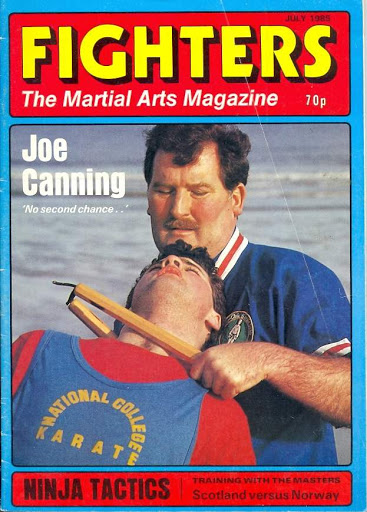 Joe Canning on the cover of Fighters magazine, 1985
Joe Canning on the cover of Fighters magazine, 1985It was about this time that Irish Karate students George and Joe Canning had become equally frustrated with the points and light sparring systems of traditional Karate, where they trained under Peter Suzuki. Prof. George Canning had begun his martial arts training during his time in the British Army as a Royal Engineer. Here, between 1959-1965 he studied various martial arts including boxing, Judo and Jujitsu, and upon leaving the service diligently began training in Wado Ryu Karate under Suzuki along with his brother Joe Canning.
Becoming increasingly disillusioned with the restrictions of a traditional model, George and Joe sought out other instructors and styles of combat and were introduced to Petar Mejick, and Meiji Suzuki. Deeply impressed with the lightening speed grace and power of the unrestricted movement of the two masters, George and Joe earnestly began redeveloping their skill as martial artists and redefining themselves in terms of this new found fluidity of movement. Soon after George, Majick and Suzuki launched a modern system based on their discoveries of integrating full contact martial arts with movements of boxing and karate – their own brand of kickboxing which they named Mugendo, meaning the "Unlimited Way".
Under the flag of Mugendo, and with the founding of the Irish Martial Arts Commission in the 1970’s, the Canning brothers started to introduce full contact competition into Ireland and Europe. The training and competition was hard, according to Joe, - "it wasn’t clean and wasn’t nice, it was hard hitting and cut through the fantasy people developed about the martial arts. You could take a hit or you couldn’t. You could fight and win, or lose, regardless it told you a lot about yourself and who you were as a person". A theme Joe continues to this day in his instruction.
The early days of full contact fighting however here in Ireland were just as problematic as the situation faced by Joe Lewis in the States. This new sport had no true codified rules, and as it was developing many changes were made and lessons learned. Joe discussed with me times when venues were booked and fighters failed to show because of fear of full contact impact and politics attempting to undermine the new sport that showed simply that the “lethal one blow one kill” techniques of traditional martial arts failed to stand up in a realistic full contact fight environment.
I was shocked to learn that as the style and competition became codified fighters were reluctant to kick in kickboxing bouts, and that a mandatory of eight kicks had to thrown by each fighter or fear disqualification. Fighters preferred to slug it out and box rather than kick box and failed to see the dynamic essence of the art.
The Essence of Kickboxing
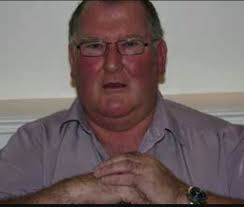 Joe Canning
Joe CanningIn an unpopular decision at the time, Joe Canning began to introduce changes to the rules, many of which are just seeing introduction and development in Irish Competition today. The focus again became more on the combined art of Kicking and Boxing, the very essence of the kickboxing system. As a result referees had to work harder to ensure a good fight, students of the sport had to be tougher and fitter and utilise a wider range of combat techniques and apply them with a greater knowledge of timing, and distance.
While difficult in the early stages these changes have brought about a new life to the sport here in Ireland. The crowds are excited by real competition between modern gladiators who showcase stunning skill in technique combined with dramatic and exciting combat. The fighters themselves, free of the shackles of poor regulation, are finding a true platform for physical expression, honest combat and deserved victory.
As Joe Canning notes the quality of the fighters is changing. Young students stick with the art longer, dedicating themselves to physical perfection and martial mastery, with an every evolving level of skill emerging. Sitting over tea, Joe smiles as he reflects on the tumultuous history Kickboxing here in Ireland has endured and the incredible development the sport has seen in recent years with dozens of properly run and scheduled competitions a year, and best of all a new breed of fighter, a new breed of athlete and combatant, one that blends the best of boxing with martial arts kicking and a true fighting spirit.
With the increasing popularity of full contact competition, with the experience of George and Joe Canning to guide them, The Unlimited Way of kickboxing looks set for unlimited progress and development in the coming years.
Joe Canning passed away, peacefully on February 1st 2020, surrounded by his loving family.
From the Archives
Paul 'Batman' O'Brien has been professionally writing about the martial arts since 2005. He has authored over 300 articles for various publications, and has a regular column in Irish Fighter magazine, the best selling martial arts magazine in Ireland.
From the Archives republishes O'Brien's articles on a wide range of martial arts topics from throughout the years.
Free Samurai E-books
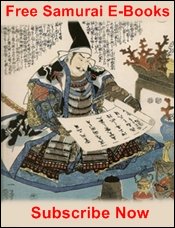
Get Free Exclusive Samurai Guides and E-books





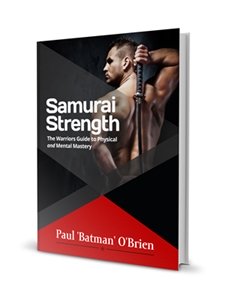
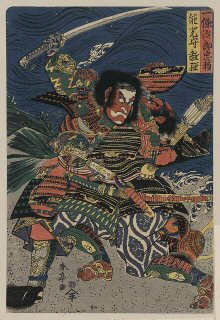
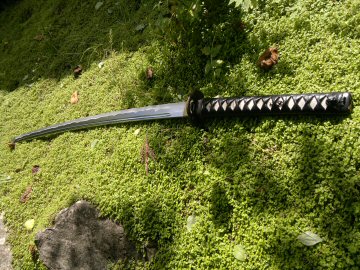
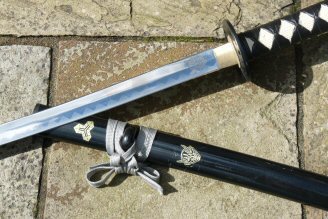
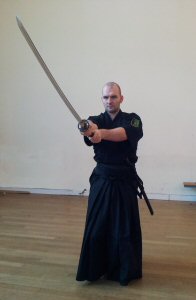
New! Comments
Have your say about what you just read! Leave me a comment in the box below.